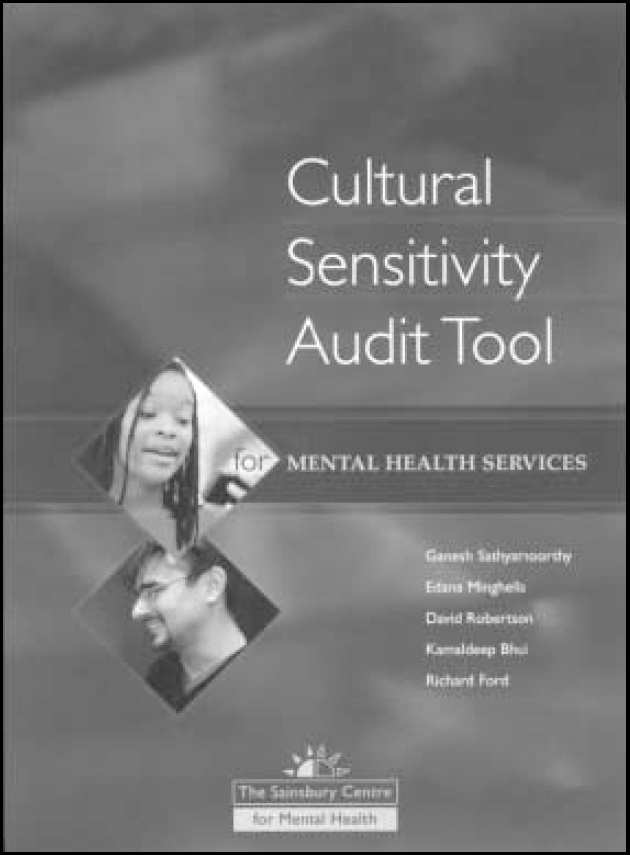‘The Sainsbury Centre for Mental Health seeks to encourage fair and best care for everybody affected by a mental health problem. With this in mind we have developed the Cultural Sensitivity Audit Tool to improve services for minority ethnic communities.’

The tool consists of two interview schedules (one for staff and one for service users), guidance on using the tool and a case study. It was developed during an evaluation of community services in west London, and further refined as part of an evaluation in Hackney, east London. It was then piloted independently by workers in Middlesbrough. The work in Hackney is the case study presented in the package; none of the other fieldwork is presented or indeed referenced.
The user interview has seven domains (demographic; accessibility of services; language and interpreters; general service use issues; availability of appropriate staff; availability of ethnicity specific services; and users' views on the cultural appropriateness of mental health services). The staff interview has similar themes but also investigates issues of specific training and the use of staff as interpreters.
I am in no doubt that the authors of this tool are earnest in their desire to improve services for minority groups. My concerns would be that equity of treatment for ethnic minorities relies on political will and good science, but this tool does not measure the political will of institutions and is not an example of good science.
It is poor science not because of problems with the tool but because there is insufficient information on its development and evaluation presented for it to be assessed. No data on the validity, sensitivity, specificity or test—retest reliability or any of the psychometrics of the tool are presented. There are no published peer reviewed scientific papers cited in support.
More fundamentally, the authors do not present evidence that the tool is useful. The case study concludes with an action plan but the audit loop was not completed and so one does not know if any of the proposed changes made a difference to the ethnic minority patients of Hackney or if the tool is sensitive enough to measure such change.
The case study produces further problems; the tool contains a handful of open-ended questions that offer a greater diversity and depth of data than the other 60 questions put together.
The interviews do not measure family or carers' views, or any of the institutional problems linked to disparities in service provision for minority ethnic groups. Those involved in research and policy in the area will have serious misgivings about the narrow conceptualisation of cultural sensitivity, and thus the limited areas of enquiry.
Given all the above this tool is unlikely to be comprehensive enough to form a framework for trusts to consult with their ethnic minority patients and staff. The authors concur with this in their introduction.
One could conclude from the results of the Hackney case study that setting up a dialogue with users and the community as part of a wide-based development plan will be more efficacious than using the tool. More work will need to be done proving that this is a useful audit tool before its use can be recommended. As is usual in these circumstances, the hard work in producing the tool needs to be backed up with hard evidence. This tool is probably no worse or better than any other tool was at this stage of development. If there is a message from this it would be that before launching a tool it may be best to present it for proper peer review and back it with sound science.



eLetters
No eLetters have been published for this article.